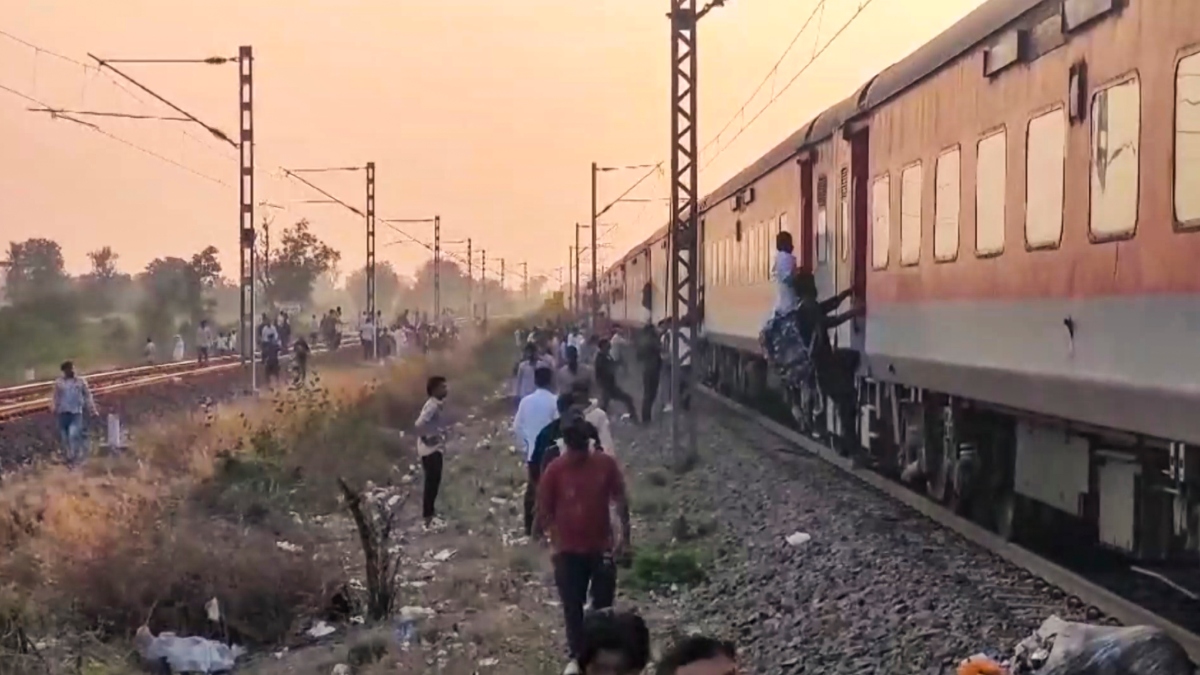 |
|
The tragic train accident in Jalgaon, Maharashtra, India, has resulted in the deaths of at least thirteen individuals, including seven Nepali nationals. This devastating event unfolded on Wednesday when passengers aboard the Lucknow-Mumbai Pushpak Express, fearing a potential fire after a chain-pulling incident, jumped onto the tracks. Their desperate attempt to escape resulted in a collision with the oncoming Karnataka Express, leading to multiple fatalities and injuries. The incident highlights the inherent dangers associated with impulsive reactions during emergencies on public transport and the critical need for improved safety protocols and passenger education. The Nepali government, through its Foreign Ministry, has confirmed the death of its seven citizens and is actively coordinating with Indian authorities to facilitate the repatriation of the deceased and provide medical care to the injured. The swift response from the Nepalese government underscores the importance of international cooperation in managing such cross-border tragedies. The incident raises significant questions regarding the circumstances that led to the chain pulling incident, and it's essential to understand whether adequate safety measures were in place to prevent such a catastrophic outcome. The investigation will critically need to determine if clearer communication channels and emergency protocols could have mitigated the panic and prevented the resulting tragedy.
The immediate aftermath of the accident saw chaos and confusion, as emergency responders struggled to manage the scene. The conflicting initial reports, with discrepancies in the number of fatalities, underscore the challenges involved in accurately assessing the situation during such high-pressure events. A state government official initially reported thirteen deaths, based on body parts found at the scene, but later clarified the count after positive identification of the remains. This highlights the difficulties in identifying victims, especially in cases of significant trauma. The involvement of both the Railway Protection Force and Government Railway Police in the preliminary inquiry emphasizes the multi-faceted nature of the investigation. Determining the root cause of the chain pulling incident is paramount. The investigation will delve into factors like potential malfunctions, communication breakdowns, or even deliberate actions that contributed to the chain-pulling. Understanding the contributing factors will be vital in establishing whether human error, mechanical failure, or inadequate safety protocols were to blame. The investigation's outcome will significantly shape future railway safety policies and practices in India.
Beyond the immediate consequences, the Jalgaon train accident raises broader questions about railway safety standards and passenger awareness. The investigation will need to explore whether sufficient emergency exits, adequate communication systems, and clear safety protocols were in place. This includes assessing whether safety instructions were effectively communicated to passengers and whether the design of the train and its surrounding infrastructure adequately addressed the risks of such emergencies. The incident serves as a stark reminder of the vulnerabilities inherent in large-scale public transportation systems. Analyzing past incidents and best practices from other railway networks around the world can inform improvements to safety protocols and infrastructure upgrades. Improvements could include implementing advanced signalling systems, enhancing emergency response capabilities, and enhancing passenger training programs on safety measures. The tragedy in Jalgaon could potentially lead to crucial policy changes that aim to enhance railway safety across India and prevent similar incidents in the future. Regular safety audits and maintenance checks on railway lines and trains are essential to prevent future incidents. The human cost of this accident is immense, and preventing future tragedies demands a holistic approach that focuses on improving infrastructure, protocols, and passenger education.
The international aspect of this tragedy, with the involvement of Nepali citizens, highlights the need for effective cross-border cooperation in managing such emergencies. The Nepali government's immediate response in coordinating with Indian agencies showcases a collaborative effort in dealing with the aftermath of the accident. This cooperation includes facilitating the identification and repatriation of bodies, providing consular assistance to the injured, and working together to determine the root cause of the incident. This collaborative response demonstrates the importance of efficient communication and coordination between governments when dealing with trans-national incidents. The effective management of such crises, including the timely sharing of information and resources, can significantly mitigate the impact of such tragedies and improve support for affected families and individuals. Learning from this tragedy necessitates a multifaceted approach that considers safety protocols, infrastructure development, emergency response, and effective international collaboration in managing cross-border incidents. The ultimate goal is not simply to prevent future accidents but to implement a comprehensive framework that effectively protects the lives and well-being of railway passengers.
Source: Jalgaon train accident: Nepal’s Foreign Ministry confirms death of 7 Nepali nationals
